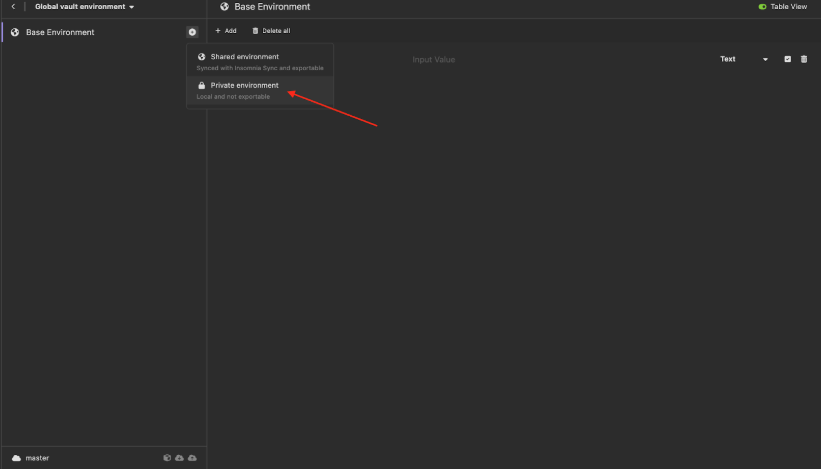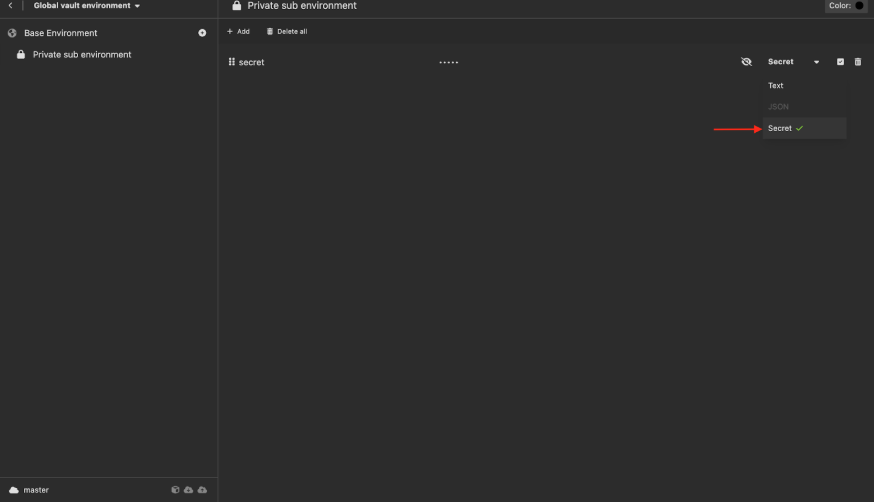-
- Enable Enterprise membership
- Configuring EE SSO
- Integrating Insomnia Enterprise with Okta SAML 2.0
- Integrating Insomnia Enterprise with Okta OpenID Connect
- Integrating Insomnia Enterprise with Microsoft Azure/Entra ID SAML 2.0
- Insomnia Whitelisting Guide for Enterprise Users
- Transfer enterprise organizations and license
- Configuring SCIM
- Multiple Owners
- Manage Domains
- Invite Controls
- Storage Controls
- Session Report
Secret Environment Variables
Secret environment variable is an environment variable type which allows users to store their secret variables locally.
By default, Insomnia does not save the vault key, so users must store it securely, as it will be required after re-login or when accessing Insomnia on another device. If the vault key is forgotten, users can reset it, but this will permanently delete all secret variables for security reasons.
Unlike normal environment variables, secret environment variables are stored as encrypted text rather than plain text, their values remain masked unless used in a request, and they are automatically added to a vault namespace when referenced.
For example, a secret variable named foo can be accessed as vault.foo.
Store Secrets
-
Generate a vault key in the Preferences page

-
Create a new sub private environment within any global environment.

-
Add your environment variable to the newly created sub private environment, choose the environment type to
Secret.
Using Secrets In Scripts
For security consideration, all secret environment variables are not exposed to Pre-Request and After-Response scripts by default.
If you want to use the secret environment variables in scripts, you need to turn on Enable vault in scripts under Preferences > General > Security.
Then you can use insomnia.vault.get(<ENV_NAME>) to get the secret value.